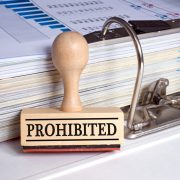Tips for Avoiding Prohibited Transactions in a Self-Directed IRA
What you’ve heard is true: you can use a Self-Directed IRA for all sorts of retirement assets and classes. In fact, there are so many assets you can turn to when investing in a Self-Directed IRA. So much so that the IRS specifically lists those investments you are not allowed to have—it’s easier that way. But these are also important boundaries to learn. As you take control of your financial future by opening a Self-Directed IRA, your added freedom comes with a caveat. There are still some things you aren’t allowed to hold within a retirement account. Let’s explore some tips that will help you remember what they are.
Tip #1: Know the Prohibited Types of Investments
Because there is no list of “approved investments” in retirement accounts as defined by the IRS, you’ll have to know what you can’t invest in. That’s the first key distinction. But here are some other things you should know as you explore the types of investments you can’t keep within a retirement account:
Collectibles are a no-go.
- “Collectibles” is a broad term referring to art, gems, or even wine. Think of it as the kinds of things you might keep in your home as a personal investment. However, these are not easy to valuate, they make poor retirement investments. This is why the IRS prohibits collectibles like these. Note: this also extends to some types of precious metals. (Ex: personal holdings, precious metals of low purity, and jewelry.)
Avoid investing in S-corporations.
- This one can be a little complicated. Allowable shareholders in Subchapter S corporations do not include IRAs, which means that since your IRA is technically what would own the shares, this is not allowable if you’re looking to invest with a Self-Directed IRA—or any IRA for that matter.
Life insurance.
- Life insurance is something many people think of as a long-term investment. And while there’s no harm in thinking of it in those terms, you can’t think of it as a valid IRA investment, as they’re not allowed within an IRA. After all, the IRA is a separate entity; owning life insurance on you personally would be separate from the IRA’s purpose.
As you come to understand IRAs, you’ll likely find that it comes down to a basic rule of thumb: keep your personal investments and your IRA investments separate.
Tip #2: Work with a Great Self-Directed IRA Administration Firm
If you want to keep things simple, the best way is to work with a Self-Directed IRA administration firm you can trust. Because a Self-Directed IRA administration firm will work as the custodian on the account, they can only put through buy and sell orders for valid retirement investments. This will make it easy for you to keep things tidy and organized without worrying whether you’ve violated the rules—because you’ll only make valid buy and sell orders for assets that do belong within a Self-Directed IRA.
Of course, there’s more to the overall story of what’s allowed within an IRA. For example, you can’t use a valid investment like a piece of real estate and then live in it for your personal use—this would turn the investment into something that creates penalties and fees. Instead, you’ll want to note all of the rules when it comes to investing in retirement accounts—not just Self-Directed IRAs. Fortunately, with tips like the above, you’ll find that handling this can be easier than you imagined.
Interested in learning more about Self-Directed IRAs? Contact American IRA, LLC at 866-7500-IRA (472) for a free consultation. Download our free guides or visit us online at www.AmericanIRA.com.







